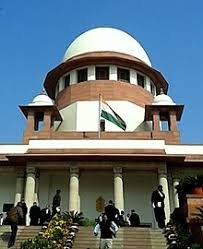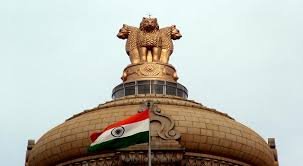This case is a criminal appeal before the Supreme Court of India1. It involves the rape and murder of a tender young girl, approximately 3 years and 9 months old. The incident occurred on 30th September 2013, when the complainant, Manoj Bhaskar Sadavarte (PW-1), a painter and the deceased child’s father, left his home in Wagbhil Gaon, Thane(W), leaving his daughter alone. Upon returning, he found his daughter and family pet dog missing3. The child’s body was recovered on 2nd October 2013 from a muddy water pond, about one kilometer from the watchmen chawl, in a highly decomposed condition. A post-mortem report revealed numerous injuries on the external and internal genitalia and anus, with the medical opinion indicating that the head injury was sufficient to cause death. The accused, Ramkirat Munilal Goud (appellant), was arrested on 3rd October 2013. The prosecution’s case was based on three links of circumstantial evidence: last seen together circumstance, extra-judicial confession, and an FSL report regarding mud/soil found in the accused’s shoes matching the pond soil8. The Trial Court convicted the appellant under Sections 302 (murder), 363 (kidnapping), 376(2)(i) (rape of child below 12), and 201 (causing disappearance of evidence) of the Indian Penal Code (IPC), and Sections 4 and 8 of the Protection of Children from Sexual Offences Act, 2013. The appellant was sentenced to death for murder. The High Court confirmed this conviction and death sentence.
Laws Involved The judgment references and applies provisions from:
- The Indian Penal Code (IPC): Specifically, Sections 302, 363, 376(2)(i), and 201, which deal with murder, kidnapping, aggravated sexual assault against a child, and causing disappearance of evidence, respectively.
- The Protection of Children from Sexual Offences Act, 2013 (POCSO Act): Sections 4 and 8, related to aggravated penetrative sexual assault and other sexual offences against children9.
- The Code of Criminal Procedure, 1973 (CrPC): Mentions Section 161 regarding witness statements and Section 164 concerning recorded statements.
- The Indian Evidence Act, 1872: Implicitly used in discussing evidence admissibility, particularly with regard to Section 27 concerning discovery of facts.
- Jurisprudence on Circumstantial Evidence: The Court heavily relied on the well-established principles for conviction based on circumstantial evidence, particularly as crystallized in the case of Sharad Birdhichand Sarda v. State of Maharashtra. These principles necessitate that:
The circumstances from which the conclusion of guilt is to be drawn must be fully established.
The facts so established must be consistent only with the hypothesis of the guilt of the accused and inconsistent with innocence.
The circumstances must be of a conclusive nature.
Every possible hypothesis except the guilt of the accused must be excluded.
There must be a chain of evidence so complete as not to leave any reasonable ground for the conclusion consistent with the innocence of the accused.
Reasoning The Supreme Court’s reasoning for overturning the conviction was primarily based on the “shabby and perfunctory investigation” and the prosecution’s failure to establish a complete and unbreached chain of incriminating circumstantial evidence. Key points of the reasoning include:
1.Unreliable “Last Seen Together” Evidence: The Court found the testimony of the “last seen together” witnesses (PW-9, PW-14, PW-15) to be “vacillating and self-contradicting and perfunctory”. The complainant’s (PW-1) story was noted to have been “virtually repeated” and “improved” over time. The statements of the main witnesses were either not recorded at the earliest opportunity or were found to have undergone “blatant improvements” and “deliberately modulated and twisted facts”. The Investigating Officers (PW-16, PW-18) were criticised for their failure to record witness statements promptly and for creating “padding” in the evidence.
2.Weak and Unacceptable Extra-Judicial Confession: The alleged extra-judicial confession made to PW-17 was considered “unreliable and unworthy of credence”. The witness’s testimony regarding the confession had “improvements and contradictions” and was deemed a “very weak piece of evidence”2526. The Court stated that “no reliance can be placed on his testimony”.
3.Inconclusive Forensic Evidence (FSL Report): The FSL report, which found mud/soil in the accused’s shoes “similar” to the pond soil, was deemed “vague and inconclusive” and did not conclusively favour the prosecution’s story. The DNA analysis report was inconclusive and did not positively find human blood or semen on seized articles, failing to implicate the accused. The Court noted that the possibility of the soil not being from other places visited by the accused was not excluded, rendering the finding non-incriminating.
4.Failure to Prove Circumstantial Chain: The prosecution’s case was “entirely based on circumstantial evidence”. The Court reiterated that to secure a conviction based solely on circumstantial evidence, the prosecution must prove every incriminating circumstance, forming a complete and unimpeachable chain that leads to the only hypothesis of the accused’s guilt and excludes any other possibility. The Court concluded that the prosecution had “miserably failed to prove a complete and unbreached chain of incriminating circumstances”.
5.Lack of Motive: No clear motive for the crime was established by the prosecution.
Holding The Supreme Court allowed the appeals , delivering the following key holdings:
- The impugned judgment of the High Court dated 25th November 2021 and the judgment and sentence order of the Trial Court dated 5th March 2019 and 8th March 2019, respectively, are quashed and set aside .
- The appellant, Ramkirat Munilal Goud, is acquitted of all charges .
- The Court directed that the appellant be released forthwith, unless his detention is required in any other case .
Ramkirat Munilal Goud V. State Of Maharashtra Etc.
Supreme Court: 2025 INSC 702: (DoJ 07-05-2025)








